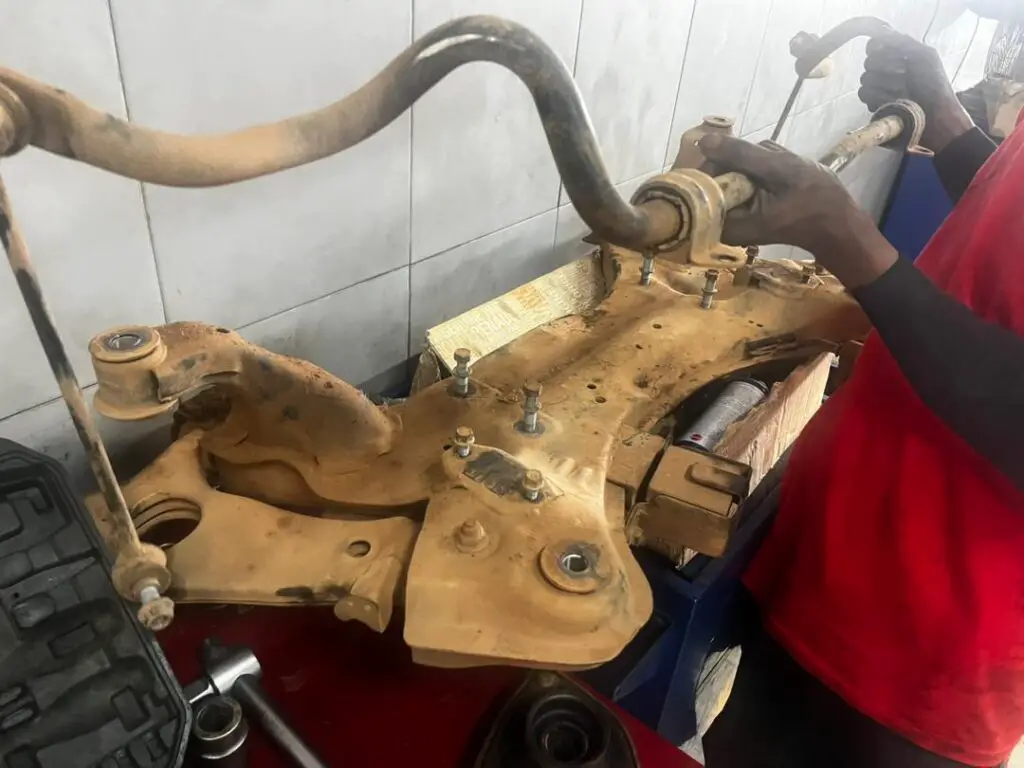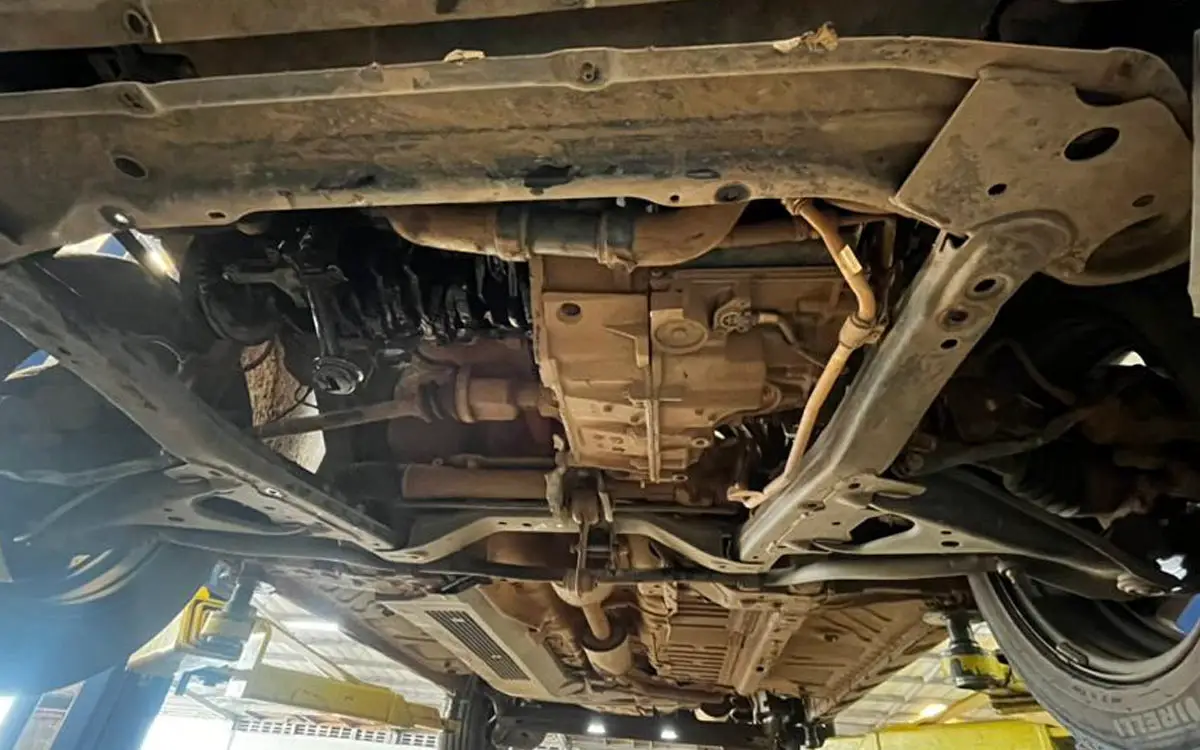If you’re experiencing shaking, wobbling or other problems with your steering system, it’s possible that your steering stabilizer is faulty. This component is responsible for keeping your car stable when you’re driving, so if it is faulty, you’ll notice the difference. In this article, we will discuss the symptoms of a bad steering stabilizer and how to fix it.
What is a steering wheel stabilizer
A steering stabilizer is a suspension component that absorbs shock and vibration from the road. It’s usually located near the front of the vehicle on either side of the axle. The main purpose of the stabilizer is to keep the car from wobbling or shaking when you are driving on uneven surfaces. People believe a steering wheel stabilizer is a cure for death wobble, but that’s not always the case. It just can help to reduce death wobble, but it’s not a guaranteed fix.

Functions of a steering wheel stabilizer
The functions of the steering wheel stabilizer are as follows:
- It absorbs shock and vibration from the road.
- The steering wheel stabilizer also helps keep your vehicle stable when driving on uneven terrain or roads.
- It can help to reduce death wobble, but it’s not a guaranteed fix.
Types of steering wheel stabilizers:
There are 2 types of steering wheel aftermarket stabilizers namely Emulsion and IFP (Internal Floating Piston)
Emulsion Stabilizers
Emulsion Stabilizers are the most common type and are less expensive. They are filled with hydraulic fluid and have a gas chamber that helps to dissipate the shocks.
IFP (Internal Floating Piston) Stabilizers
IFP (Internal Floating Piston) Stabilizers are more expensive but offer a better ride quality. They have a piston that is floating in oil, which helps to absorb shocks better. IFP stabilizers are less likely to leak than emulsion stabilizers.
How do you know if your steering wheel stabilizer is bad?
Several symptoms can indicate that your steering wheel stabilizer is going bad. These include:
1. Shaking or wobbling of the steering wheel:
Have you ever felt your car shaking when driving on the highway? If so, it’s possible that your steering stabilizer is to blame. A bad steering stabilizer can cause the steering wheel to shake or wobble, making it difficult to keep the car in a straight line.
2. Vibration on the steering wheel:
Another symptom of a bad steering stabilizer is vibration in the steering wheel. If you feel a vibration when you’re driving, it’s possible that the stabilizer is to blame. The vibration may be caused by a problem with the suspension or by the stabilizer itself.
3. Difficulty steering:
If you’re having difficulty steering your car, it’s possible that your stabilizer is to blame. A bad stabilizer can make it difficult to turn the steering wheel, making it hard to keep the car in a straight line.
4. The car veers to one side when driving on a straight road
You might think your car veering to the side when driving on a straight road might be because of your steering wheel not being straight when in fact it is the stabilizer. When the stabilizer goes bad, it can cause the car to veer to one side, making it difficult to keep the car in a straight line.
5. Uneven wear on tires
Do you notice how your tires unevenly wear out? That’s because of a bad stabilizer. When the stabilizer is not functioning properly, it can cause the car to shake or wobble, which can lead to uneven wear on your tires.
If you notice any of these symptoms, it’s important to have your car checked out by a mechanic. They will be able to diagnose the problem and recommend the best course of action.
Checking for a bad steering wheel stabilizer?
If you think your steering wheel stabilizer is to blame for your car’s shaking or wobbling, you can try to fix it yourself. Here are some steps you can take:
1. Check the suspension:
The first thing you should do is check the suspension. If the suspension is worn out, it can cause the car to shake or wobble. You can check the suspension by looking for leaks or by taking the car for a test drive.
2. Check the stabilizer:
If the stabilizer is to blame, you can try to fix it yourself. First, check for leaks in the stabilizer. If there are no leaks, you can try to adjust the tension on the stabilizer. You can do this by loosening the nut on the top of the stabilizer and turning the adjuster clockwise.
Replacing the steering stabilizer
If you need to replace your steering stabilizer, the first thing you’ll need to do is find the right replacement for your car. Make sure to get one that’s designed for your make and model of vehicle. Once you have the new stabilizer, follow these steps to install it:
- Begin by disconnecting the old steering stabilizer from the frame of the car. You’ll need a wrench to loosen the bolts that hold it in place. Once the bolts are loose, you can remove the old stabilizer.
- Take the new stabilizer and bolt it into place. Make sure to tighten the bolts so that it’s secure.
- Once the new stabilizer is in place, you can reconnect any other components that you removed. This includes the steering wheel and the tires.
- Once everything is back in place, take your car for a test drive. Make sure to test it on different types of terrain to see how it performs.
If you notice any problems with the new stabilizer, make sure to take it back to the mechanic so they can fix it.
Repairing the old steering stabilizer
If the old steering stabilizer isn’t too damaged, you may be able to repair it instead of replacing it. This is usually a cheaper option, but it’s not always possible. To repair the stabilizer, you’ll need to:
- The first step is to clean the stabilizer. This will remove any dirt or debris that’s preventing it from working properly.
- Once it’s clean, you’ll need to inspect it for any damage. If there are any cracks or leaks, you’ll need to replace the stabilizer.
- If there is any damage, you’ll need to repair it. This may involve patching up cracks or replacing parts of the stabilizer.
- Once you’ve made all the repairs, you’ll need to test the stabilizer to make sure it’s working properly. Take your car for a test drive and see how it handles.
If you notice any problems with the stabilizer, make sure to take it back to the mechanic so they can fix it.
These are just a few of the most common ways to fix a bad steering stabilizer. If you’re having trouble with your stabilizer, make sure to take it to a mechanic
Conclusion
Bad steering stabilizers can cause several problems with your car. If you’re having trouble with your car, it’s important to check the stabilizer and the suspension. If you can’t fix the problem yourself, you can take your car to a mechanic. They will be able to diagnose the problem and fix it for you. Thanks for reading! I hope this article was helpful.
Please feel free to leave a comment below if you have any questions.

